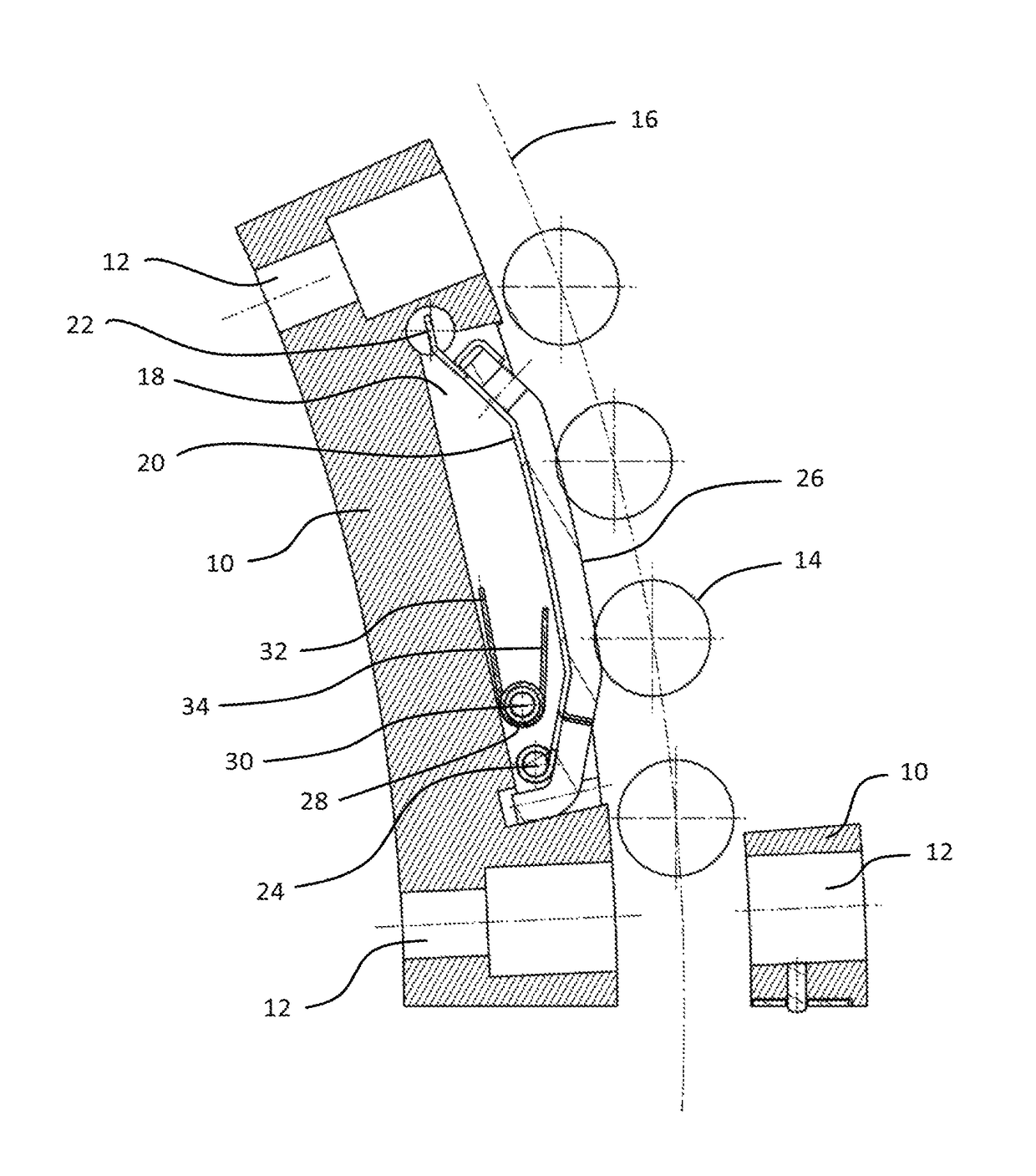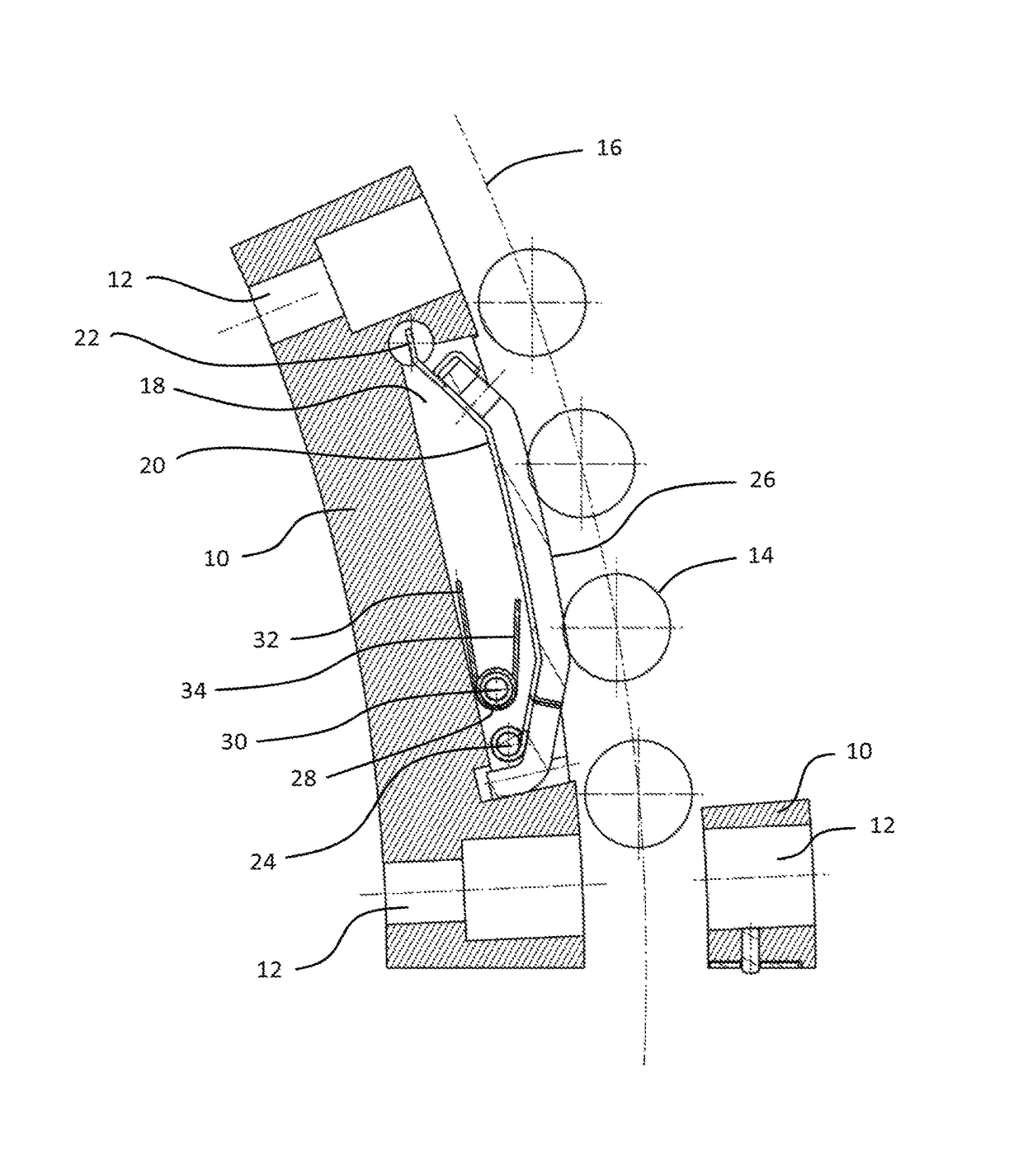Rotor for a rotary press
a rotary press and rotor technology, applied in the direction of presses, shaping presses, manufacturing tools, etc., can solve the problems of not inconsiderable cost, insufficient transmission of lubricant to the upper and lower punches, and the contact between the contact part and the upper or respective lower punches passing through becomes increasingly impaired, so as to achieve constant transmission of lubricant and reduce the degree of wear. , the effect of reducing the degree of wear
- Summary
- Abstract
- Description
- Claims
- Application Information
AI Technical Summary
Benefits of technology
Problems solved by technology
Method used
Image
Examples
Embodiment Construction
[0027]The rotor shown in the FIG. 1 comprises a die plate, not shown in the sectional view, including die bores and upper punches 14 and lower punches assigned in pairs to the die bores and circulating synchronously with the die plate. The rotor further comprises an upper punch receiver (not shown) in which the upper punches 14 are axially guided as well as a lower punch receiver (not shown) in which the lower punches are axially guided. The rotor comprises an upper control cam which controls the axial movement of the upper punches 14 passing through the upper control cam, as well as a lower control cam (not shown) which controls the axial movement of the lower punches passing through the lower control cam. The rotor is part of a rotary press which further comprises a drive for the rotational driving of the rotor as well as at least one filling station comprising at least one filling device for filling the bores with material to be compressed. At least one pressing station comprisin...
PUM
| Property | Measurement | Unit |
|---|---|---|
| constant force | aaaaa | aaaaa |
| force | aaaaa | aaaaa |
| movement | aaaaa | aaaaa |
Abstract
Description
Claims
Application Information
 Login to View More
Login to View More - R&D
- Intellectual Property
- Life Sciences
- Materials
- Tech Scout
- Unparalleled Data Quality
- Higher Quality Content
- 60% Fewer Hallucinations
Browse by: Latest US Patents, China's latest patents, Technical Efficacy Thesaurus, Application Domain, Technology Topic, Popular Technical Reports.
© 2025 PatSnap. All rights reserved.Legal|Privacy policy|Modern Slavery Act Transparency Statement|Sitemap|About US| Contact US: help@patsnap.com


